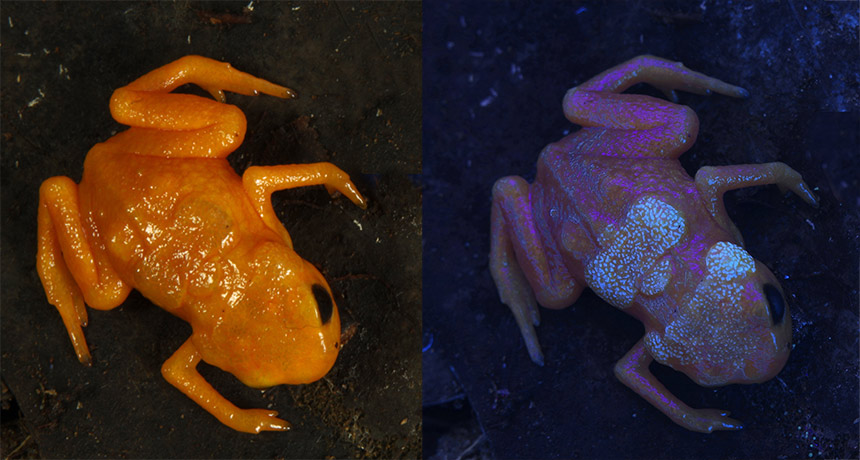Tiny pumpkin toadlets have glowing bony plates on their backs
Researchers suggest the structures may help the deaf frogs communicate

FUNKY FROGS Pumpkin toadlets, native to southeastern Brazil, are the first known frogs to have bony plates that glow through their skin when illuminated with ultraviolet light.
S. Goutte, Carlos Jared






